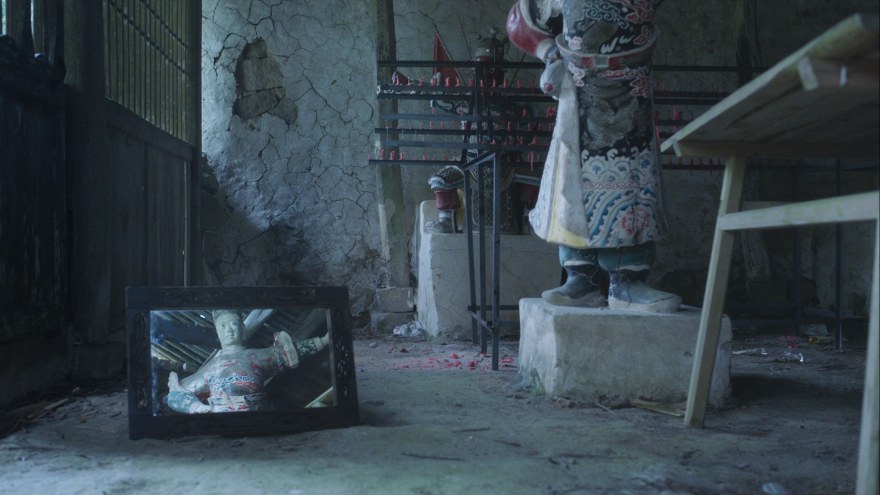Night cap with The Water Will Carry Us
Interview with Shasha Huang, director of The Water Will Carry Us
The film’s pace is rather peaceful and slow, making The Water Will Carry Us into a sort of a meditative film. Is this effect what you wanted to achieve?
Yes. My original intention was to express the story and the reflection in a poetic way, similar to the meditative quality of the “water”, and the “mirror” acts as an observer. All of these naturally lead to the peaceful and slow pace of the film. However, in the last part of the film, there are some quick cut images, which change the film’s pace a little bit to make it more dynamic and to build up the emotion. In addition, the Chinese title of my film is Cha Ji (wabi-sabi), which is a Japanese aesthetic and philosophical concept originated from Zen in the period of the Song dynasty of China. It means admiration for the beauty of imperfection and respect for the natural development of things. In my film, this is showed through the beauty of ruined and abandoned objects. Moreover, the English title The Water Will Carry Us has another meaning of the circulation of time. Time is similar to water in the sense that both of them are like circles because both go forward but then come back in different forms. The present is the past, and it is also the future. Like what I express in the film, the dying-out of traditional arts and skills is only a little event in the circulation of time. Maybe those traditional arts and skills will come back one day, or maybe they have never existed. Regardless, everything has its own course.
Can you talk us through the filming processes a little?
My inspiration comes from two photos that I shot in 2017 (just like the last two shots of the film, but the mirror was different). At the beginning of the summer of 2018, I started to investigate several historic villages and to look for some old carpenters. Finally, I chose an 80-year-old carpenter as one of my leading actors. I mix the way of documentary and fiction to create my film. For example, for the decoration of the old carpenter’s house, we used the wooden basin and the wooden bucket made and still used by the carpenter himself. The script had been modified dozens of times, changing from a short film to a feature film, and from feature film back to a short film again. I even replaced a main character with a more interesting role. The shooting of the film took place from 23 February to 3March 2019, and then we spent seven months on post-production, including three days in June on reshot, before we finished the whole film. There are also some noteworthy details of the design of sounds. For example, I played the sound of breath in the film.
Can you tell us a bit about the location? The landscapes are stunning.
The location is called the Nanxi River Scenic Area. Entering the East China Sea, the Nanxi River is located in my hometown, Yongjia County of the Zhejiang Province in eastern China, and is influenced by a maritime climate, which is warm and moist all year round. Thus, there are often foggy mountains and clear waterfalls. 1,600 years ago, the first classical Chinese scenery poems were created here. Apart from the stunning landscapes, there are also many historic villages in this area, and these villages usually have a culture of farming and reading. The area was added to UNESCO’s World Heritage Tentative List on November 29, 2001 in the Mixed (Cultural & Natural) category.
What sort of freedom would you say the short format allows?
The creation of short films is freer and more sentimental than that of feature films. Unlike feature films, which have more logical structures, shorts can just be depictions of an atmosphere or a status. Shorts are like Tang poems, Song verses, or Chinese paintings, all of which leave some blanks. They allow us to hang something in doubt in the film and to let the audience complete the film with their own imagination.
What do you consider your cinematographic references?
First of all, I have learned much from Abbas Kiarostami’s The Wind Will Carry Us and other films. I learned, among other things, the way of mixing documentary and fiction and the art of not telling everything clearly in the film but leaving some spaces for the audience’s imagination. Béla Tarr’s The Turin Horse influenced the camera movements and the pace of the film. The use of non-professional actors and the theme of dying villages in Andrey Konchalovskiy’s The Postman’s White Nights also gave me many cinematic references. From Andrei Tarkovsky and Agnès Varda’s Les Plages d’Agnès, I got many inspirations about how to use the elements of “mirror” and “water”.
The Water Will Carry Us is part of International Competition I8.








